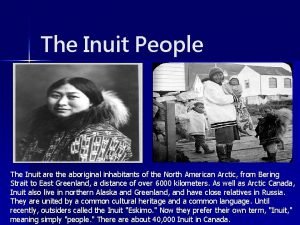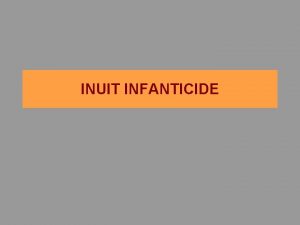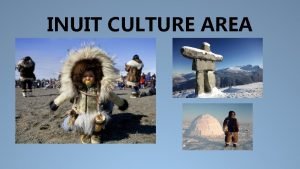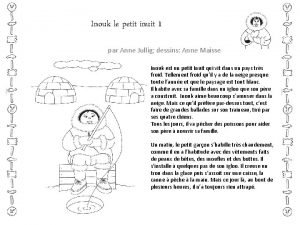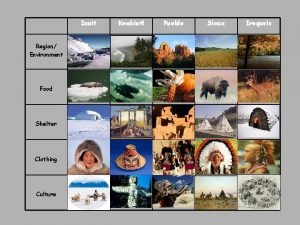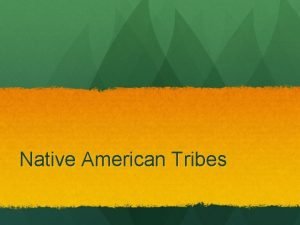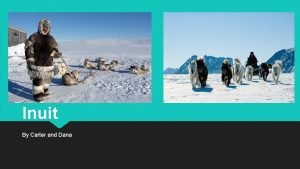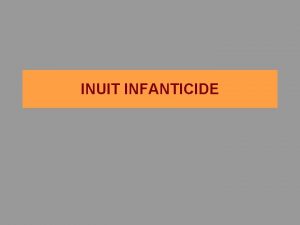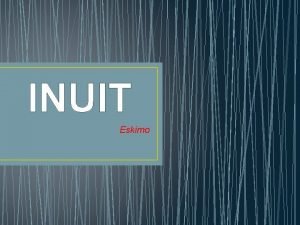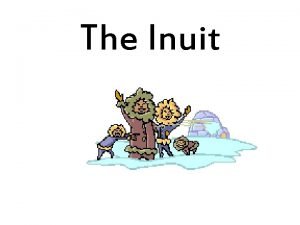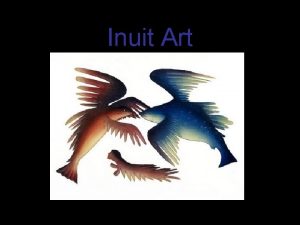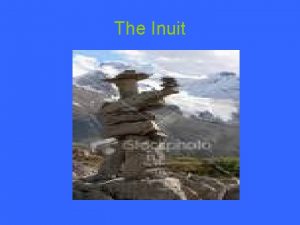Inuit of the Arctic What do you know












- Slides: 12

Inuit of the Arctic

What do you know about the Inuit? Let’s do a pair/share brainstorm:

The Inuit of the Arctic Territory: ØNorthern Canada (Yukon, Northwest Territories and Nunavut) ØAlaska, Greenland *Traditionally near or around the coast

The Climate of the Arctic • • The land of “ice and snow” and tundra (no vegetation) Little or no trees Little rain or precipitation (some parts considered desert) Temperature is cool, cold, and freezing cold!

Clothing – Keeping warm in the Arctic Caribou skin Seal skin

Food – Subsistence in the Arctic • Inuit that lived inland ate: • Caribou • Musk-ox • Bear • Fish • Inuit that lived on the coast ate: • Seal • Birds • Walrus • Bear • Whales • Fish

Transportation - Land • Winter – dog sled • Summer – walking

Transportation - Water * Umiak (many people) * Kayak (one person)

Skin Tents Housing Igloo

Inuit Society • Based on hunting groups and trading partnerships. • Patrilineal organization (family traced through the father). • Elders directed behaviour and formed the governing council. • Belief that people should behave properly in order to exist with nature. • Illness or misfortune was a sign from nature that people were not acting properly. (Taboo)

Masks

Inukshuk The inukshuk is used as: • a navigational aid • a marker for hunting grounds • a hidden supply of food or supplies • in hunting to attract geese and caribou • and as a way to mark sacred (holy – spiritually important) ground.



